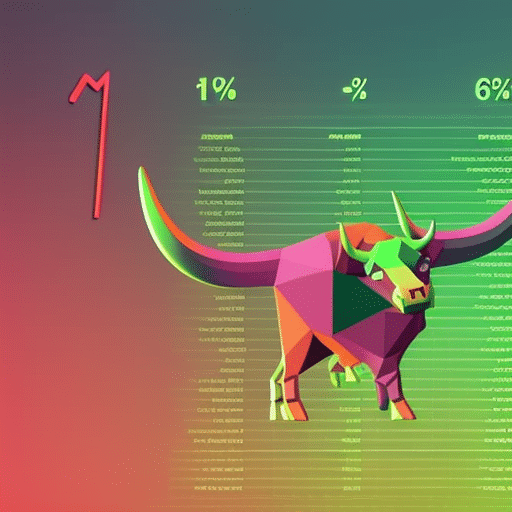Xrp Value Drivers Overview
Ripple (XRP) is a cryptocurrency with a market capitalization of over $13 billion. It has become one of the most popular cryptocurrencies in recent years and has seen increased interest from investors, traders, and institutions alike. This article provides an overview of XRP value drivers – such as technology, use cases, partnerships, institutional adoption, regulatory developments, demand and supply dynamics, price volatility and impact of news – to better understand how these factors influence XRP’s price.
Underlying this analysis is an understanding that the value of any asset is determined by its potential for future appreciation or loss relative to its current state. This means that understanding the various factors that drive XRP’s value can help investors make informed decisions about their investments. Therefore, this article attempts to provide an analytical overview of these various drivers influencing XRP’s price movements in order to gain more insight into what makes up the market sentiment around Ripple (XRP).
Technology Behind XRP
The technology behind XRP is based on a distributed, open-source protocol that enables secure, instant and nearly free global financial transactions of any size with no chargebacks. This decentralized ledger provides a platform for users to securely store and transfer their digital assets across the network without relying on third-party intermediaries. The use of cryptographic techniques provides additional layers of security to the system and makes it resistant to malicious attacks. Additionally, its consensus mechanism allows for faster transaction speeds compared to traditional methods while ensuring the integrity of records stored on the ledger. Moreover, its network architecture is designed with resiliency in mind, allowing it to scale as more users join the platform without compromising network security. Thus, XRP’s technology offers a viable alternative solution for global financial transactions that are fast, secure and cost effective. In conclusion, this robust infrastructure is essential in driving the value of XRP by providing an efficient platform for users to transact securely.
Use Case
XRP is a cryptocurrency that is gaining traction due to its fast transaction speed and low transaction cost. These two features make it an ideal candidate for use in a variety of applications, ranging from purchasing goods to transferring money across borders. This use case of XRP will be discussed further in the following section, exploring the various advantages that come with using this digital asset.
Fast Transaction Speed
With lightning-fast speed, transactions made with XRP can be settled in a matter of seconds, allowing users to take advantage of opportunities in the market quicker than ever before. This is enabled by the decentralized infrastructure that forms the backbone of XRP and its liquidity pools. By leveraging these components, users are able to perform transactions almost instantly with no need for a third party intermediary or multiple currency exchanges. Furthermore, this fast transaction speed allows traders to quickly capitalize on price shifts without having to wait for extended periods of time.
The speed at which XRP is able to process these high-volume transactions is further enhanced by its low transaction cost, making it an attractive option for investors looking to make quick and profitable trades.
Low Transaction Cost
An attractive feature of XRP is its low transaction cost, allowing investors to make profitable trades without incurring high fees. This makes it an especially appealing option for investors who are looking to maximize their profits while minimizing costs. The low transaction cost associated with XRP also helps promote:
- Network scalability by increasing the number of transactions that can be processed in a given period;
- Liquidity management by providing greater liquidity and reducing volatility;
- Cost savings on transfers due to faster settlement times and lower fees.
These features make XRP particularly attractive for financial institutions looking to benefit from the advantages of blockchain technology without the high cost associated with managing large networks. In addition, these features help create a strong foundation for partnerships with other companies and organizations.
Partnerships
Partnerships within the Ripple network have been instrumental in driving the value of XRP. These partnerships are formed with digital wallets, service providers, and other networks that use RippleNet technology. This allows users to access payment options from a variety of sources while maintaining low transaction costs and fast processing speeds. Through these partnerships, Ripple has grown its user base exponentially and further increased liquidity for XRP tokens as well as helped promote their usage among institutional investors. As more services come onboard, this drives up demand for XRP and adds to its overall value. The increasing number of strategic partnerships is also indicative of the fact that institutional adoption is likely to continue growing in the future.
Institutional Adoption
Institutional adoption of RippleNet technology has seen a significant increase due to the benefits it provides in terms of cost efficiency and transaction speed. This is also largely attributed to the rise of trusted custodians, who are able to provide secure storage for digital financial instruments. The addition of these custodians allows institutions to feel more comfortable investing in RippleNet technology due to their efforts towards safeguarding investments. Furthermore, these custodians ensure that institutional investors have access to reliable management tools and other features needed for effective investment processes. These services enable institutions to manage their investments securely while still taking advantage of the benefits provided by RippleNet technology. As a result, this has contributed significantly towards increased institutional adoption and trust in XRP as an asset. Therefore, with trusted custodians providing secure storage for digital financial instruments and reliable management tools, there is an increasing acceptance among institutions for XRP as a valuable asset class. This trend will likely continue into the future as more organizations look towards leveraging RippleNet technology for efficient transactions and lower costs. In conclusion, institutional adoption of XRP continues to grow due to its perceived advantages over traditional payment systems such as speed and cost efficiency; coupled with the added security provided by trusted custodian services makes it an attractive option for many organizations looking toward investing in digital assets. Moving forward, regulatory developments will be key in determining how this development progresses further down the line
Regulatory Developments
Institutional adoption of XRP has been a major driving force for the currency’s value. However, regulatory developments are also an important factor in determining its future potential. Regulatory laws and regulations can have profound implications on the usage and acceptance of XRP, not only from a legal standpoint but also from a security standpoint.
To better understand the impact that legal and security risks may have on XRP’s value, it is important to consider the following: 1) What risks do existing regulations pose? 2) How will new developments shape its use cases? 3) To what extent is Ripple held accountable for the actions of others? 4) How might changes in global regulation affect its long-term prospects? Answering these questions can help us gain insight into how regulatory decisions may drive or hinder XRP’s value. With this in mind, understanding both demand and supply factors play an integral role in evaluating XRP’s market performance.
Demand and Supply
The demand and supply of XRP are integral to its market performance, as they both affect its perceived value. Factors such as network efficiency, liquidity pooling, and the amount available in circulation can all influence how much investors are willing to pay for the digital asset. The demand for XRP is driven by speculation on future price movements and by using it for payments or other services that leverage its blockchain technology. Supply is mainly dependent on the amount of XRP held by Ripple Labs, which has an effect on the availability of tokens in circulation.
The supply side of XRP is prone to market volatility due to speculation about how many tokens Ripple Labs will release at any given time. This affects liquidity pooling, and thus there is a need for reliable sources of information regarding new token releases from Ripple Labs. As such, understanding the dynamics between demand and supply helps investors make informed decisions when it comes to investing in XRP. With these insights, traders can manage their exposure to price volatility more effectively as they evaluate short-term versus long-term investment opportunities with this cryptocurrency.
Price Volatility
Price volatility is a key factor in assessing the potential of investing in XRP, as it can influence both short-term and long-term returns. Decentralization effects and token economics are two factors that contribute to price volatility. Decentralization affects how much influence on prices are held by large investors, while token economics affect how many tokens will be available in circulation and how these tokens can be used. This ultimately affects the willingness of investors to buy or sell XRP, which leads to changes in its value over time. The impact of news can also have a significant effect on the price volatility of XRP, as it can drive sentiment around certain topics and cause investors to act quickly on their decisions. These movements often create short-term fluctuations that may not reflect true underlying value.
Impact of News
News can have a major influence on the variability of XRP prices, providing both positive and negative sentiment to the market. The impact of news is often dependent on where the news originates from, as well as its relevance to the XRP industry:
-
Industry Trends: News that relates directly to XRP such as new partnerships, products or services has a direct impact on the coin’s value. For example, when Ripple announced their xRapid initiative in 2018, this sent a wave of enthusiasm through the community which caused XRP prices to skyrocket at that time.
-
Litecoin Comparison: Comparisons between coins can also affect price volatility. If for example Litecoin made headlines for achieving high transaction speeds or low fees, then this could lead many investors to sell their XRP holdings in favor of Litecoin given its comparative advantages.
Overall, it is clear that news and media coverage can significantly move cryptocurrencies markets. This is why it is important for investors to keep up-to-date with daily news related to Ripple and other altcoins in order to make informed decisions about their investments.
Frequently Asked Questions
How can I buy XRP?
Enthralling investors, XRP trading has surged with the recent ripple adoption. With an abundance of resources available for purchase, one can acquire XRP through a variety of exchanges and digital wallets. However, caution is advised as the fluctuating market can lead to potential losses.
Where can I store my XRP?
XRP can be securely stored using a variety of trading platforms and wallets. It is important to consider the security measures implemented by each platform, as well as any potential risks involved in storing XRP on them.
Is XRP a good investment?
The speculation surrounding XRP has been driven by Ripple economics, creating a unique investment opportunity. Anecdotally, XRP has seen high returns on investment in the short-term, making it an attractive option for investors seeking quick gains. However, long-term success relies on careful analysis of Ripple economics and the potential for future growth.
How does the XRP ledger work?
The XRP Ledger is a decentralized, open-source blockchain platform that utilizes the Ripple Consensus Protocol to promote network security. The protocol enables multiple validators to independently and simultaneously reach consensus on ledger updates without a central coordinator.
What is the total supply of XRP?
The total supply of XRP is 100 billion, with a current circulating supply of 45.8 billion as of April 2021. Ripple holds approximately 55 billion XRP in escrow accounts which are gradually released into the market to increase liquidity and ensure stability in the Ripple market.





 Bitcoin
Bitcoin  Ethereum
Ethereum  Tether
Tether  XRP
XRP  USDC
USDC  Lido Staked Ether
Lido Staked Ether  TRON
TRON  Dogecoin
Dogecoin  Cardano
Cardano  Figure Heloc
Figure Heloc  WhiteBIT Coin
WhiteBIT Coin  Wrapped stETH
Wrapped stETH  Bitcoin Cash
Bitcoin Cash  Wrapped Bitcoin
Wrapped Bitcoin  USDS
USDS  Chainlink
Chainlink  Wrapped eETH
Wrapped eETH  Binance Bridged USDT (BNB Smart Chain)
Binance Bridged USDT (BNB Smart Chain)  LEO Token
LEO Token  WETH
WETH  Hyperliquid
Hyperliquid  Stellar
Stellar  Monero
Monero  Zcash
Zcash  Ethena USDe
Ethena USDe  Coinbase Wrapped BTC
Coinbase Wrapped BTC  Litecoin
Litecoin  Sui
Sui  Avalanche
Avalanche  Hedera
Hedera  Shiba Inu
Shiba Inu  sUSDS
sUSDS  USDT0
USDT0  Dai
Dai  Mantle
Mantle  PayPal USD
PayPal USD  Toncoin
Toncoin  World Liberty Financial
World Liberty Financial  Cronos
Cronos  Ethena Staked USDe
Ethena Staked USDe  Uniswap
Uniswap  Polkadot
Polkadot  MemeCore
MemeCore  Aave
Aave  USD1
USD1  Bittensor
Bittensor  Canton
Canton  Rain
Rain